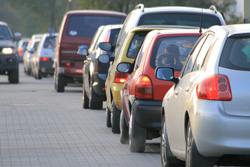Lowering urban traffic noise emissions
The 'Quieter surface transport' (Silence) project was supported by EU funding in its development of an integrated system of methodologies and technologies for efficient control of urban traffic noise. The integrated system takes into consideration city authorities, individual (road) traffic and mass (rail and road) transport, while taking a holistic approach to all aspects of traffic noise. Urban noise scenarios and perceptions of noise and annoyance were studied. Research also targeted improvements in individual road and rail vehicle noise, reducing noise from tyre–road interaction, and low-noise road surfaces and construction. Traffic management and city planning were also a focus of project work, as was training for future follow up and exploitation of Silence project results. Cars, buses, trams, trains, metros and light duty trucks were the main categories of urban traffic vehicles considered. A three-pronged approach assessed urban noise situations, defined urban noise scenarios as a basis for project work, and identified related noise abatement priorities and potential for noise reduction. Activities related to RTD involved development of noise abatement technologies and tools, methodologies for noise reduction, and policy decisions. Researchers investigated and simulated sources of road and rail traffic noise to determine how new materials and designs can be used for noise reduction. They developed and presented solutions for reducing noise emission of road surfaces/constructions and rails, as well as methods to be used by road traffic management and driver assistance systems for noise control. In addition, urban action plans and decision support systems were designed, which can support city council initiatives and related goals. A reduction in road and rail traffic noise emission in urban areas by up to 10 A-weighted decibels (dBA) can be achieved by implementing Silence’s combined results. This bodes well for expanding metropolitan areas and burgeoning passenger and freight transport.





